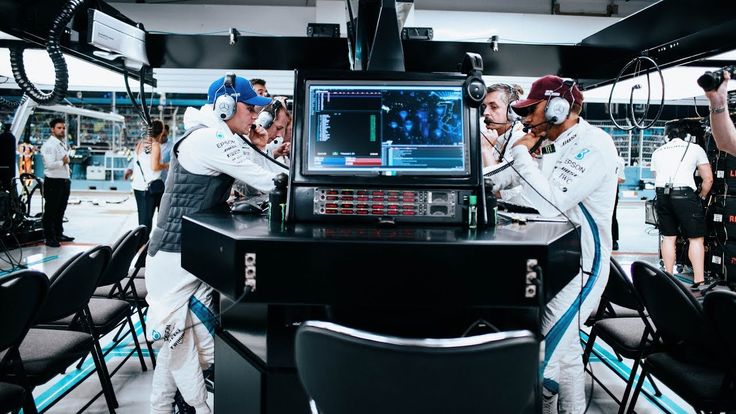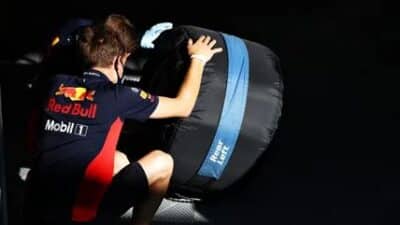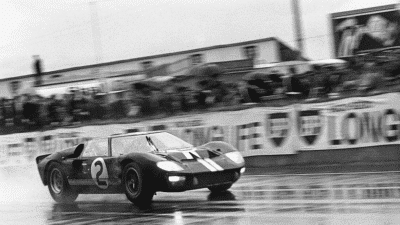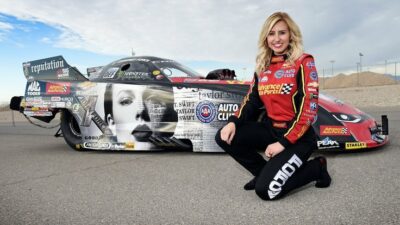In the high-speed world of motorsports, drivers get most of the spotlight, but there’s another critical team member working behind the scenes. Race engineers serve as the vital link between driver feedback and car performance, making real-time decisions that can determine race outcomes. These technical experts translate what drivers feel into data-driven adjustments that unlock the car’s full potential.

The role of race engineers has become more important as racing technology has advanced. They analyze streams of data from sensors while listening to driver comments about how the car handles. This unique combination of technical knowledge and communication skills makes them essential to any successful racing team.
Race engineers don’t just crunch numbers – they build trust with drivers and work closely with mechanics and strategists. Their ability to interpret driver feedback and convert it into actionable changes separates winning teams from the rest of the field. Understanding their role reveals why these professionals are truly the unsung heroes of motorsport success.
Key Takeaways
- Race engineers bridge the gap between driver experience and technical car setup through data analysis and clear communication
- They serve as the primary connection point between drivers and the broader technical team during races and practice sessions
- Their expertise in translating feedback into performance improvements directly impacts race results and championship success
Understanding the Vital Role of Race Engineers
Race engineers serve as the critical bridge between drivers and their high-performance machines in motorsport. Their role has transformed from basic mechanical support to sophisticated technical leadership that directly impacts race outcomes.
Defining the Race Engineer Position
A race engineer acts as the primary technical liaison between the driver and the racing team. They manage all performance-related aspects of the vehicle during competition.
Race engineers differ significantly from mechanics, who focus on hands-on repairs and maintenance. Engineers concentrate on strategic planning and data analysis instead of physical work with tools.
Key Responsibilities Include:
- Analyzing telemetry data from onboard sensors
- Making real-time setup adjustments
- Developing race strategy
- Communicating directly with drivers via radio
The position requires deep technical knowledge of vehicle dynamics, aerodynamics, and engine performance. Engineers must translate complex data into actionable information that drivers can understand and implement.
They serve as the voice drivers hear most frequently during races. This communication link proves essential for making split-second decisions that can determine race outcomes.
Historical Evolution in Motorsport
The race engineer role emerged as motorsports became more technologically advanced. Early racing relied primarily on mechanical knowledge and driver instinct.
Modern sensors and telemetry systems transformed the profession in recent decades. Engineers now have access to hundreds of data points collected in real-time during races.
Formula 1 led this technological revolution in the 1980s and 1990s. Other racing series quickly adopted similar approaches to maximize competitive advantage.
Technology Timeline:
- 1980s: Basic telemetry introduction
- 1990s: Advanced data logging systems
- 2000s: Real-time strategy optimization
- 2010s: Predictive analytics integration
The role expanded beyond race day to include extensive preparation and analysis. Engineers now spend weeks analyzing data between races to identify performance improvements.
Teams began hiring specialists with engineering degrees rather than promoting mechanics. This shift elevated the technical sophistication of race strategy and car setup.
Core Responsibilities in Modern Racing
Modern race engineers handle multiple complex tasks simultaneously during competition. They manage technical aspects, coordinate pit stops, configure cars for specific tracks, and develop comprehensive strategies.
Primary Duties:
| Area | Specific Tasks |
|---|---|
| Data Analysis | Monitor tire temperatures, fuel consumption, lap times |
| Strategy | Plan pit stop timing, tire selection, fuel loads |
| Communication | Relay information between driver and team |
| Setup | Adjust suspension, aerodynamics, engine mapping |
Engineers must process vast amounts of information quickly during races. They analyze competitor strategies while monitoring their own car’s performance in real-time.
The relationship between driver and race engineer proves critical for success. Trust and clear communication allow teams to maximize both human and mechanical performance.
Pre-race preparation involves extensive simulation work. Engineers use historical data and weather forecasts to predict optimal strategies for upcoming races.
They coordinate with other specialists including aerodynamicists, tire engineers, and strategists. This teamwork ensures all technical elements work together effectively during competition.
Collaboration Between Race Engineer and Driver
The partnership between driver and race engineer forms the backbone of F1 success through constant communication, precise feedback analysis, and strategic adjustments that directly shape how drivers approach each corner and overtaking opportunity.
Building Trust and Communication
Trust between driver and race engineer develops over countless hours of shared experiences. The relationship between driver and race engineer requires complete honesty from both sides.
Race engineers must deliver accurate information under pressure. Drivers need to trust the data and strategy calls even when their instincts suggest otherwise.
Key Communication Elements:
- Clear, concise radio messages during races
- Detailed technical discussions between sessions
- Honest feedback about car performance issues
- Strategic planning for qualifying and race scenarios
Ben Michell from Aston Martin explains that race engineers act as the go-between for drivers and the technical team. This position requires strong communication skills in both directions.
The best partnerships develop their own shorthand language. Quick phrases replace long explanations during high-speed moments.
Driver Feedback Interpretation
Race engineers must translate driver descriptions into technical solutions. When a driver says the car feels “loose” or “tight,” engineers convert these feelings into specific setup changes.
Common Driver Feedback Terms:
- Understeer: Front tires lose grip first
- Oversteer: Rear tires slide out
- Balance shift: Car behavior changes during tire degradation
- Braking stability: How the car responds under heavy braking
Engineers analyze this feedback alongside telemetry data. They compare what drivers feel with what sensors measure. Sometimes the data contradicts driver perception.
The analysis of data from practice sessions and races helps engineers understand patterns in driver feedback. This creates a database of solutions for future problems.
Experienced partnerships develop better feedback interpretation over time. Engineers learn each driver’s specific language and tendencies.
Influence on Driving Style
Race engineers shape how drivers approach different track conditions and race situations. They provide crucial information about tire management, fuel saving, and when to push for maximum speed.
Strategic calls directly impact driving decisions. Engineers might tell drivers to save tires early or push hard to build a gap before pit stops.
Engineer Influence Areas:
- Brake point adjustments for tire preservation
- Cornering techniques for better lap times
- Defensive driving positions during battles
- Energy deployment in hybrid systems
The collaboration between technical expertise and driving talent creates measurable performance gains. Engineers provide the knowledge that helps drivers extract maximum speed from their cars.
Some drivers adapt their natural style based on engineer recommendations. Others prefer engineers who work within their existing approach. The best partnerships find the right balance between adaptation and natural talent.
Strategic Influence on Race Performance
Race engineers shape competitive outcomes through data-driven strategy development and real-time decision making. Their strategic expertise directly impacts lap times, pit stop timing, and overall race positioning.
Developing Effective Race Strategy
Race engineers analyze multiple data streams to create winning strategies before and during races. They study track conditions, weather patterns, and competitor behavior to make informed decisions.
Pre-Race Strategy Elements:
- Tire compound selection and stint planning
- Fuel load calculations
- Setup adjustments for track conditions
- Weather contingency plans
The race engineer’s job involves evaluating vehicle performance from both telemetry data and driver feedback. This information helps them adjust suspension settings, engine calibrations, and aerodynamic components.
During races, engineers monitor live data to identify opportunities. They track tire degradation rates and fuel consumption to optimize pit stop windows. Split-second decisions about strategy changes can determine race outcomes.
Formula 1 teams rely heavily on this strategic input. Engineers communicate directly with drivers to relay critical information about gaps to competitors and optimal racing lines.
Maximizing Competitive Advantage
Race engineers create competitive advantages through superior data analysis and quick problem-solving abilities. They identify performance gains that other teams might miss.
Key Competitive Areas:
- Setup optimization: Fine-tuning car balance for specific track sections
- Tire management: Extending stint lengths while maintaining pace
- Traffic navigation: Planning overtaking opportunities and defensive positions
F1 teams use advanced data analytics to guide race engineers in making strategic decisions. Real-time telemetry helps them spot issues before they become race-ending problems.
Engineers also provide psychological support to drivers. They deliver calm, clear instructions during high-pressure moments. This communication helps drivers maintain focus and execute complex strategies.
The relationship between driver and engineer becomes crucial during close battles. Quick strategy adjustments can turn defensive positions into attacking opportunities through superior race craft and timing.
Mastering Data Analysis and Telemetry
Race engineers rely on sophisticated data analysis techniques to transform raw telemetry streams into actionable insights. They must interpret complex sensor readings, leverage specialized software tools, and monitor critical factors like tire degradation and changing track conditions to optimize race strategy.
Interpreting Telemetry Data
Modern race cars generate thousands of data points every second through hundreds of sensors monitoring everything from throttle position to suspension movement. Engineers must quickly identify patterns in this data stream to make split-second strategic decisions.
Key telemetry parameters include:
- Driver inputs (throttle, brake, steering angle)
- Vehicle dynamics (lateral acceleration, yaw rate)
- Suspension data (ride heights, damper speeds)
- Temperature readings (tires, brakes, engine)
Engineers analyze roll stiffness distributions and understeer angles to understand chassis balance. They calculate roll angle ratios by measuring spring compression and laser ride height sensors.
Damper histograms reveal how much time each damper spends at different speed ranges. A wider histogram indicates loose low-speed damping, while a taller profile suggests high damping rates.
Engineers compare throttle percentage across laps to spot performance changes. Lower full-throttle time often signals rear tire degradation or traction issues.
Utilizing Data Analysis Tools
Race engineers employ specialized software to process and visualize the massive amounts of telemetry data flowing from the car. These tools convert raw sensor readings into meaningful charts, graphs, and overlays.
Data loggers capture and store information from sensors, recording thousands of measurements per second. Engineers review this stored data between sessions to identify setup improvements.
Telemetry systems transmit real-time information from the vehicle to pit crews during practice and races. This allows immediate monitoring and quick strategy adjustments.
Engineers use X-Y scatter charts to plot relationships between variables like lateral acceleration and roll angles. Curvature analysis helps evaluate driver lines through corners by measuring the inverse of cornering radius.
Histogram analysis provides insights into damper performance across different speed ranges. Engineers look for symmetrical profiles to ensure balanced energy dissipation between compression and rebound strokes.
Advanced visualization tools overlay multiple data channels, letting engineers spot correlations between driver inputs and vehicle responses that might otherwise go unnoticed.
Managing Tire Wear and Track Conditions
Engineers monitor tire performance through multiple telemetry channels to predict degradation patterns and optimize pit stop timing. Temperature sensors across each tire’s surface reveal heat distribution and wear characteristics.
Tire monitoring includes:
- Surface temperatures at multiple points
- Pressure changes during sessions
- Grip levels through lateral force measurements
- Wear rates based on lap time degradation
Engineers track changes in understeer angles throughout stints. Increasing understeer often indicates front tire degradation, while decreasing values may signal rear wear issues.
Track condition analysis involves monitoring ambient temperature, track surface temperature, and grip levels. Engineers adjust tire compound recommendations and pit strategies based on these changing conditions.
Weather data integration helps predict how rain or temperature changes will affect tire performance. Engineers prepare alternate strategies for different scenarios before conditions actually change.
Fuel load effects on tire wear require constant attention. As cars burn fuel and become lighter, weight distribution changes affect tire loading and degradation rates across all four corners.
Integration Within the Technical Team
Race engineers serve as the central hub connecting drivers with various technical specialists, coordinating data analysis across multiple departments while ensuring seamless information flow during critical race situations.
Role in Technical Team Operations
Race engineers act as the lynchpin of communication between all team members during race operations. They coordinate with aerodynamics specialists, suspension engineers, and data analysts to implement real-time vehicle adjustments.
The race engineer manages incoming telemetry data from multiple technical departments. They filter this information and present only the most critical insights to drivers during high-pressure situations.
Key operational responsibilities include:
- Coordinating suspension adjustments with chassis engineers
- Relaying aerodynamic feedback to design specialists
- Managing tire strategy with performance analysts
- Synchronizing pit stop timing across all departments
During practice sessions, race engineers compile feedback from various technical experts. They translate complex engineering concepts into actionable recommendations that drivers can immediately implement on track.
The engineer maintains constant communication with pit wall strategists. This ensures that technical modifications align with overall race strategy and fuel management plans.
Collaborative Problem-Solving
Technical teams rely on race engineers to identify performance issues quickly during sessions. Engineers utilize telemetry data to monitor tire wear, fuel usage, and vehicle dynamics while coordinating solutions across departments.
When handling problems occur, race engineers immediately consult suspension specialists. They analyze data patterns and implement joint solutions within tight time constraints between practice sessions.
Problem-solving workflow:
| Issue Type | Technical Collaboration | Response Time |
|---|---|---|
| Tire degradation | Performance analysts + strategy team | 2-3 minutes |
| Suspension problems | Chassis engineers + data specialists | 5-10 minutes |
| Aerodynamic balance | Aero department + vehicle dynamics | 10-15 minutes |
Race engineers facilitate technical expertise sharing between departments. They ensure that solutions from one specialist don’t negatively impact another system’s performance.
The collaborative approach extends to post-session analysis. Engineers compile feedback from all technical departments to develop comprehensive setup changes for subsequent sessions.
Race Engineer Careers in Formula 1 and Beyond
Race engineering careers in Formula 1 require specific educational backgrounds and technical skills, with professionals often starting in junior positions before advancing to work directly with drivers. The field continues to evolve with new technology and data analysis methods that shape future career opportunities.
Career Pathways and Notable Figures
Most Formula 1 teams employ two race engineers, one for each driver, making these positions highly competitive and selective. Ben Michell, Aston Martin’s Head of Performance Optimisation, represents the type of senior leadership that race engineers can aspire to reach in their careers.
Being a race engineer is a relatively senior role due to its critical importance to team success. Most current race engineers started in other positions within Formula 1 teams before advancing to this role.
Career progression typically follows this path:
- Junior Engineer: Data analysis and support roles
- Performance Engineer: Car setup and optimization
- Race Engineer: Direct driver communication and race strategy
- Senior Leadership: Department heads like Ben Michell at Aston Martin
The small cadre of people centered around helping each driver perform at their maximum creates limited but highly rewarding career opportunities.
Skills and Qualifications for Success
Education is the cornerstone for aspiring race engineers, with most professionals holding engineering degrees in mechanical, automotive, or aerospace engineering. Technical knowledge must be paired with strong communication skills.
Essential Technical Skills:
- Data analysis and interpretation
- Vehicle dynamics understanding
- Telemetry systems operation
- Race strategy development
Communication Requirements:
- Clear radio communication under pressure
- Ability to translate complex data into simple instructions
- Strong interpersonal skills for driver relationships
Race engineers must work effectively within huge companies with hundreds of employees while maintaining focus on their specific driver’s needs. Experience in motorsports, whether through internships or junior categories, provides crucial practical knowledge.
Future Challenges and Innovations
The symbiotic partnership between driver and race engineer will become more important as Formula 1 technology advances. Race engineers must adapt to new data sources and analytical tools.
Emerging technologies are changing the profession:
- Artificial Intelligence: Enhanced data processing and predictive analysis
- Real-time Analytics: Faster decision-making during races
- Simulation Technology: More accurate race strategy planning
- Advanced Telemetry: Deeper insights into car and driver performance
Race engineers will need to master these new tools while maintaining their core function as the link from the driver to all that expertise, data and experience. The profession continues to evolve as teams seek every advantage in the competitive world of Formula 1.
Frequently Asked Questions
Race engineers handle complex technical challenges while managing real-time communication with drivers and analyzing massive amounts of performance data. Their work spans from pre-race setup optimization to strategic decision-making during competitions.
What are the primary responsibilities of a race engineer in motorsports?
A race engineer serves as the main link between drivers and their crew during races. They relay critical information about race progress and coordinate setup changes throughout the event.
Race engineers constantly monitor multiple data streams during competitions. They filter through complex information to deliver only the most important updates to drivers at the right moments.
Communication timing requires careful consideration since drivers can become distracted during corners. Engineers must deliver condensed, clear messages that drivers can quickly understand and act upon.
The engineer also translates between drivers and mechanics when setup adjustments are needed. They understand both the driver’s feedback and the technical changes required to achieve desired performance improvements.
How does data analysis by race engineers affect the performance of a race car?
Race engineers analyze telemetry data to identify where teams lose time on track. They compare current performance against historical data to spot areas for improvement.
During practice sessions, engineers study tire wear patterns and fuel consumption rates. This analysis helps them plan optimal tire strategies for race day.
Teams run race simulations with different fuel loads to understand how weight affects lap times. Engineers use this data to calculate fuel burn rates and their impact on tire degradation.
Temperature monitoring across all car systems helps prevent mechanical failures. Engineers track brake temperatures, oil temperatures, and other critical components to keep cars within safe operating ranges.
What qualifications are necessary for someone to become a race engineer in a professional racing team?
Automotive or mechanical engineering degrees provide the foundation for understanding vehicle dynamics. Mathematics, physics, and information technology backgrounds also prove valuable.
Additional courses in aerodynamics and advanced physics strengthen applications. These specialized skills help engineers understand complex car behavior and performance optimization.
Only 20 race engineer positions exist in Formula 1, making competition extremely fierce. Candidates must demonstrate exceptional technical knowledge and communication abilities.
Previous motorsport experience is essential for professional racing positions. Most engineers work their way up through karting and junior racing series before reaching top levels.
In what ways do race engineers collaborate with drivers to improve vehicle performance on the track?
Engineers work closely with drivers to optimize car setups for specific tracks and conditions. They interpret driver feedback about handling characteristics and translate this into technical adjustments.
Communication between sessions helps identify setup problems and solutions. Engineers explain how different adjustments will affect car behavior so drivers understand the changes being made.
During races, engineers provide pace guidance based on strategic requirements. They help drivers understand the bigger picture when immediate racing instincts might conflict with optimal race strategy.
The relationship requires mutual trust since drivers must follow engineer instructions even when they conflict with competitive instincts. Good engineers can get through to their drivers during high-pressure moments.
How do race engineers contribute to the strategic planning of a race, including pit stops and tire management?
Engineers bring practice session data to pre-race strategy meetings. They share findings about tire performance, fuel consumption, and optimal setup configurations with strategists and team principals.
Tire degradation analysis from practice helps determine pit stop windows. Engineers calculate how different tire compounds perform over stint lengths and track conditions.
During races, engineers monitor competitor pace and positioning. They work with chief strategists to adjust plans based on real-time developments and changing track conditions.
Engineers also coordinate pit stop preparations by communicating setup changes to mechanics. They ensure that wing adjustments and other modifications are ready when drivers arrive in the pits.
What are the latest technological advancements that race engineers are utilizing to gain a competitive edge?
Artificial intelligence and machine learning transform how engineers analyze data. These tools identify patterns and insights that were previously impossible to detect manually.
Advanced simulation software allows engineers to test setup changes virtually before implementing them on track. This reduces the time needed to find optimal configurations during limited practice sessions.
Real-time telemetry systems provide instant feedback on car performance and component conditions. Engineers can spot developing problems before they cause mechanical failures or performance losses.
Predictive analytics help engineers anticipate how changing track conditions will affect tire performance and fuel consumption. This information improves strategic decision-making throughout race weekends.










